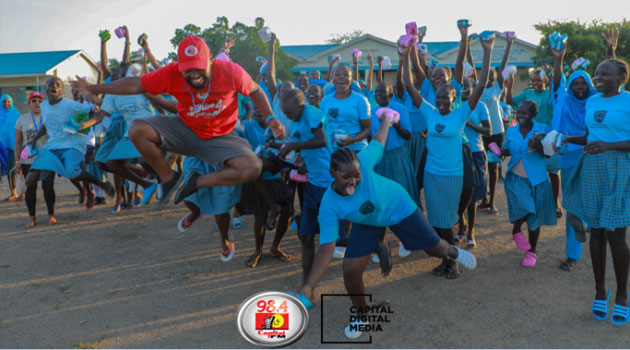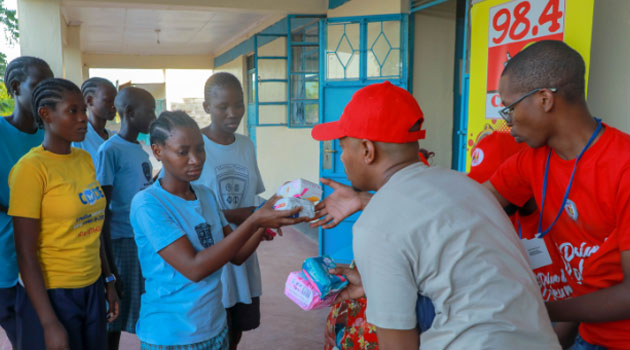NAIROBI, Kenya, Feb 14 – The July 9, 2011 independence proclamation for South Sudan rekindled fresh hope for many.
For citizens of Africa’s youngest nation and East African Community’s newest member, the tide had turned. Africa’s longest-running civil war had finally ended to the delight of many, and crucially so women and girls who had borne the brunt of the conflict.
Patience *, then aged 10, was among the lucky ones who escaped the chaos that defined the second Sudanese Civil War (1983 – 2005) which left about 2 million people dead and twice as many displaced.
She lived in Kampala, Uganda, her parents having fled war at home.
In Uganda, Patience had it all. Her father and mother had enrolled her in one of the finest schools in Kampala.
“Life was much easier with both my parents in Kampala. They took me to expensive schools which I’d never imagined,” she tells a Capital Media Group team on a visit to Kakuma refugee camp, a UNHCR-run shelter for the displaced located northwest of Turkana.
Patience lost her father, the family’s breadwinner, in a resurging civil war which broke out in December 2013, barely three years after South Sudan gained independence from the repressive and now ousted Omar al-Bashir-led regime in the north.
The raging war which will go down in history as the third Sudanese Civil War, altered her family’s way of life, rendering them penniless.
The only hope for Patience was Kakuma refugee camp, where her mother hoped she’d have a chance to continue with her studies.
The heart-wrenching reality Patience and her mother faced marked the beginning of a journey into what seemed then a bleak future.
“When the war broke out in South Sudan in 2013, I lost my dad. That was the end of the support I was receiving. My mum said we had to come to a refugee camp since we could no longer afford life in the city without the support of my dad,” she says.
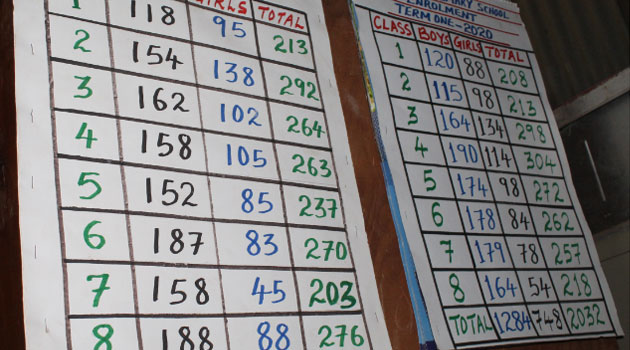
Girls have a slim chance of remaining in schools compared to boys. A quick analysis of enrollment figures reveals a grim reality – there is only one girl for every three male pupils you come across in upper primary school classes/CFM – Jeremiah Wakaya
Patience joined thousands of school-going children in Kakuma where the 27 existing primary schools are overcrowded and acutely under-resourced. Girls like Patience are also outnumbered by their male counterparts.
“Pupils would sit on stones. There were almost 300 people in my class, and most would speak their vernacular languages,” she narrates.
Girls have a slim chance of remaining in schools compared to boys. A quick analysis of enrollment figures reveals a grim reality – there is only one girl for every three male pupils you come across in upper primary school classes.
Girls dropout of schools as soon as they reach their adolescence, Joseph Waiyaki, Head Teacher at Kadugli Primary School says.
“Uncles are the greatest threat here. They get the largest share of dowry payments,” he explains.
Waiyaki’s Class VIII for instance has 54 girls registered for the 2020 Kenya Certificate of Primary Education (KCPE) exams against 164 boys. This mirrors 2019 KCPE data where the number of girls registered were 88 against 188 boys.
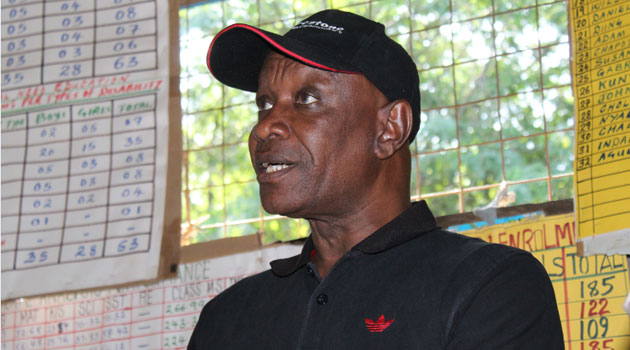
Girls dropout of schools as soon as they reach their adolescence, Joseph Waiyaki, Head Teacher at Kadugli Primary School says. “Uncles are the greatest threat here. They get the largest share of dowry payments,” he explains/CFM – Jeremiah Wakaya
Patience and her schoolmates at Morneau Shepell Secondary School, a donor-funded school, are just a fraction of school-going children in Kakuma.
Globally, only 63 per cent of school-going refugee children are enrolled in primary schools compared to 91 per cent of their non-refugee counterparts, a 2019 Education Report by UNHRC shows.
The enrollment figures decline significantly at the secondary school level where the average enrollment rate for refugee children is estimated at 24 per cent compared to 84 per cent for non-refugees.
Only 3 per cent of refugees make it to university compared to the global average of 37 per cent.
In Kakuma, over 50 per cent of the population in the camp – reported at 193,684 as at December 31, 2019 – is made up of school-going children.
The number could be as high as 100,000, UN refugee agency (UNHCR) Kakuma Sub-Office Head, Ignazio Matteini, says. Matteini who took up the position in September 2019 has seen an increase in new arrivals, data shared by his office showing 13,903 refugees arrived at the camp in 2019, a significant surge compared to only 9,880 in 2018.
To put this into context, the number of refugees arriving in Kakuma in 2019 nearly matches the population in Kalobeyei Ward, one of the 18 grassroot administrative units in Turkana 40 kilometers northwest of Kakuma, standing at 17,624 according to the 2019 national census.

Matteini who took up the position in September 2019 has seen an increase in new arrivals, data shared by his office showing 13,903 refugees arrived at the camp in 2019, a significant surge compared to only 9,880 in 2018/CFM – Jeremiah Wakaya
Morneau Shepell Secondary School, a girls’ boarding school within Kakuma, enrolls 90 top performers annually.
The school offers full scholarships for all its 350 students with each class divided into two streams of 40 to 45 learners, keeping up with the 1:40 teacher to student ratio threshold recommended by the Inter-Agency Network for Education in Emergencies (INEE).
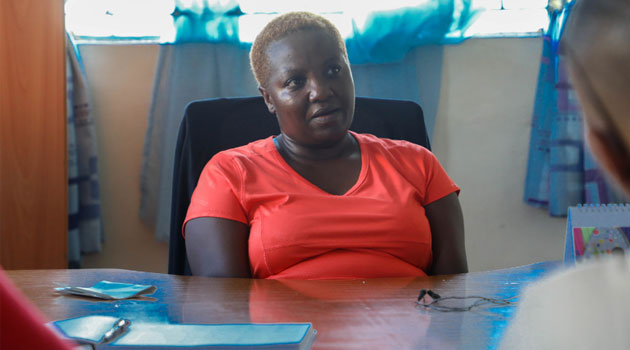
Morneau Shepell’s best student in the 2019 Kenya Certificate of Secondary Education (KCSE) attained grade B Plus, the institution’s Head Teacher Irene Kinyanjui points out/CFM – Samuel Wanjohi
The school is also a haven for adolescent girls who are often lured out of schools into early marriages.
Morneau Shepell’s best student in the 2019 Kenya Certificate of Secondary Education (KCSE) attained grade B Plus, the institution’s Head Teacher Irene Kinyanjui points out.
Patience, like other girls at Morneau Shepell Secondary School, says she is confident of a bright future with the support of donors working to afford refugee children the right to education.
Morneau Shepell is among a handful of schools at Kakuma refugee camp that benefited from a donation of sanitary pads under Capital FM’s Drive 4 Kakuma initiative supported by listeners, book publishers and stationery suppliers based in Nairobi.
- Capital Group Limited Commercial Director Farida Idris takes a selfie with students at Morneau Shepell Girls Boarding School/CFM – Samuel Wanjohi
- Capital Group Limited Digital Director David Muba engages Form IV students at Morneau Shepell in a dance/CFM – Samuel Wanjohi
- Capital Group Limited’s presenter Suleiman Munyua, Online Editor Jeremiah Wakaya distribute sanitary pads to students at Morneau Shepell/CFM – Samuel Wanjohi



































